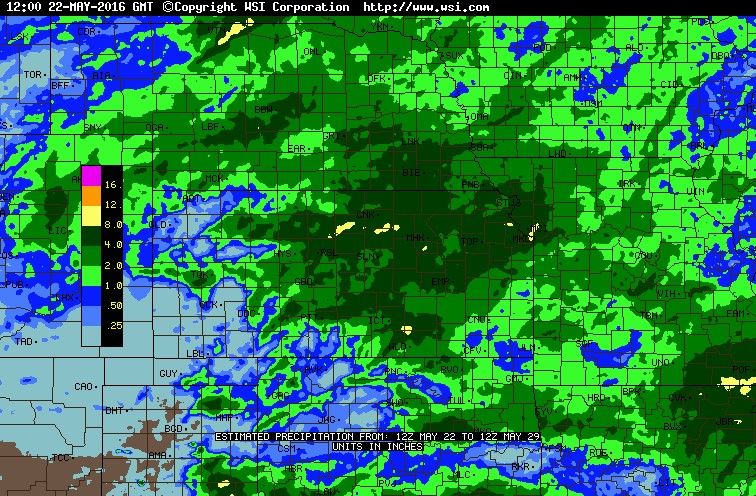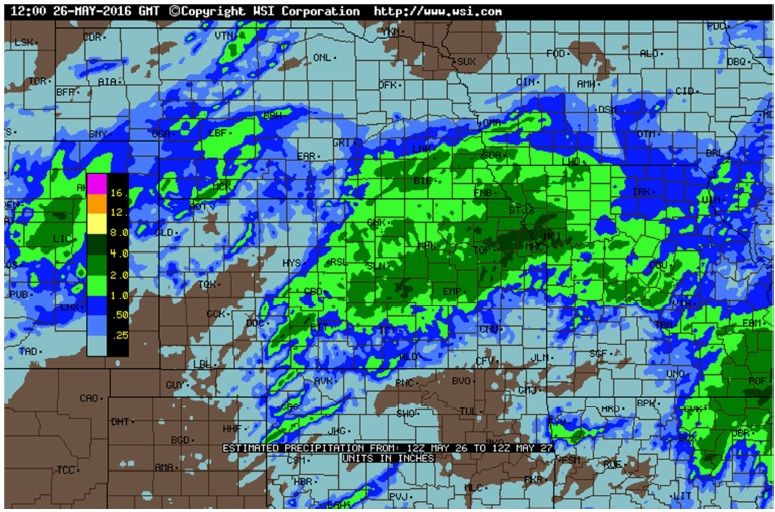Looks like we've gone from one extreme to the other this year. One thing is for sure, this week was a tough one for nesting birds. Some "prime" counties were hit hard with rain this week.
The peak of the hatch is still a few days away, although hatching has begun and some birds are on the ground already. Those will likely be gone in areas that got heavy rain. Hopefully the rain was early enough that setting hens will re-nest.
I have found the map below to be very accurate for my area. Don't know how accurate it is in other parts of the state.
Perhaps Prairie Drifter could give his thoughts on the impact of this week's precipitation on the birds. Looks like his area got 1.5 - 2".
Point!

The peak of the hatch is still a few days away, although hatching has begun and some birds are on the ground already. Those will likely be gone in areas that got heavy rain. Hopefully the rain was early enough that setting hens will re-nest.
I have found the map below to be very accurate for my area. Don't know how accurate it is in other parts of the state.
Perhaps Prairie Drifter could give his thoughts on the impact of this week's precipitation on the birds. Looks like his area got 1.5 - 2".
Point!


